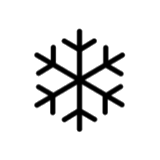Science Practices and Concepts
![]() SEPs1: Asking Questions and Defining Problems
SEPs1: Asking Questions and Defining Problems
Asking questions and defining problems in K-12 builds on prior experiences and progresses to simple descriptive questions.
![]() SEPs2: Developing and Using Models
SEPs2: Developing and Using Models
Modeling in K-12 builds on prior experiences and progresses to include using and developing models (i.e., diagrams, drawing, physical replica, diorama, dramatization, or storyboard) that represent concrete events or design solutions.
![]() SEPs3: Planning and Carrying Out Investigations
SEPs3: Planning and Carrying Out Investigations
Planning and carrying out K-12 investigations to answer questions or test solutions to problems build on prior experiences and progresses to simple investigations, based on fair tests, which provide data to support explanations or design solutions.
![]() SEPs4: Analyzing and Interpreting Data
SEPs4: Analyzing and Interpreting Data
Analyzing data in K-12 builds on prior experiences and progresses to collecting, recording, and sharing observations.
![]() SEPs5: Using Mathematics and Computational Thinking
SEPs5: Using Mathematics and Computational Thinking
Using mathematics and computational thinking in K-12 builds logical reasoning and problem-solving skills.
![]() SEPs6: Constructing Explanations and Designing Solutions
SEPs6: Constructing Explanations and Designing Solutions
Constructing explanations and designing solutions in K-12 builds on prior experiences and progresses to the use of evidence and ideas in constructing evidence-based accounts of natural phenomena and designing solutions.
![]() SEPs7: Engaging in Argument from Evidence
SEPs7: Engaging in Argument from Evidence
Engaging in argument from evidence in K-12 builds on prior experiences and progresses to comparing ideas and representations about the natural and designed world(s).
![]() SEPs8: Obtaining, Evaluating, and Communicating Information
SEPs8: Obtaining, Evaluating, and Communicating Information
Obtaining, evaluating, and communicating information in K-12 builds on prior experiences and uses observations and texts to communicate new information.
CCCs1: Patterns
Structures or events are often consistent and repeated.
CCCs2: Cause and Effect
Events gave causes, sometimes esimple, sometimes multifaceted.
CCCs3: Scale, Proportion, and Quantity
Different measures of size and time affect a system's structure, performance, and our ability to observe phenomena.
CCCs4: Systems and System Models
A set of connected things or parts forming a complete whole.
CCCs5: Energy and Matter
Tracking energy and matter flows, into, out of, and within systems helps one understand their systems behaviors.
CCCs6: Structure and Function
The ways an object is shaped or structured determines many of its properties and functions.
Over time, a system might stay the same or become different, depending on a variety of factors.
C |
|---|
CCCs2:Cause and Effect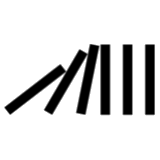
Events have causes, sometimes simple, sometimes multifaceted. Deciphering causal relationships, and the mechanisms by which they are mediated, is a major activity of science and engineering.
Primary (K-2)
Elementary (3-5)
Middle (6-8)
High (9-12)
Cause and effect is often the next step in science, after a discovery of patterns or events that occur together with regularity. A search for the underlying cause of a phenomenon has sparked some of the most compelling and productive scientific investigations. “Any tentative answer, or ‘hypothesis,’ that A causes B requires a model or mechanism for the chain of interactions that connect A and B. For example, the notion that diseases can be transmitted by a person’s touch was initially treated with skepticism by the medical profession for lack of a plausible mechanism. Today infectious diseases are well understood as being transmitted by the passing of microscopic organisms (bacteria or viruses) between an infected person and another. A major activity of science is to uncover such causal connections, often with the hope that understanding the mechanisms will enable predictions and, in the case of infectious diseases, the design of preventive measures, treatments, and cures.”. “In engineering, the goal is to design a system to cause a desired effect, so cause-and-effect relationships are as much a part of engineering as of science. Indeed, the process of design is a good place to help students begin to think in terms of cause and effect, because they must understand the underlying causal relationships in order to devise and explain a design that can achieve a specified objective.”. When students perform the practice of “Planning and Carrying Out Investigations,” they often address cause and effect. At early ages, this involves “doing” something to the system of study and then watching to see what happens. At later ages, experiments are set up to test the sensitivity of the parameters involved, and this is accomplished by making a change (cause) to a single component of a system and examining, and often quantifying, the result (effect). Cause and effect is also closely associated with the practice of “Engaging in Argument from Evidence.” In scientific practice, deducing the cause of an effect is often difficult, so multiple hypotheses may coexist. For example, though the occurrence (effect) of historical mass extinctions of organisms, such as the dinosaurs, is well established, the reason or reasons for the extinctions (cause) are still debated, and scientists develop and debate their arguments based on different forms of evidence. When students engage in scientific argumentation, it is often centered about identifying the causes of an effect. | |
CCCs3:Scale, Proportion, and Quantity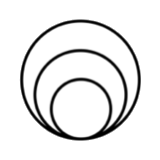
In considering phenomena, it is critical to recognize what is relevant at different size, time, and energy scales, and to recognize proportional relationships between different quantities as scales change.
Primary (K-2)
Elementary (3-5)
Middle (6-8)
High (9-12)
Scale, Proportion and Quantity are important in both science and engineering. These are fundamental assessments of dimension that form the foundation of observations about nature. Before an analysis of function or process can be made (the how or why), it is necessary to identify the what. These concepts are the starting point for scientific understanding, whether it is of a total system or its individual components. Any student who has ever played the game “twenty questions” understands this inherently, asking questions such as, “Is it bigger than a bread box?” in order to first determine the object’s size. An understanding of scale involves not only understanding systems and processes vary in size, time span, and energy, but also different mechanisms operate at different scales. In engineering, “no structure could be conceived, much less constructed, without the engineer’s precise sense of scale... At a basic level, in order to identify something as bigger or smaller than something else—and how much bigger or smaller—a student must appreciate the units used to measure it and develop a feel for quantity.” (p. 90) “The ideas of ratio and proportionality as used in science can extend and challenge students’ mathematical understanding of these concepts. To appreciate the relative magnitude of some properties or processes, it may be necessary to grasp the relationships among different types of quantities—for example, speed as the ratio of distance traveled to time taken, density as a ratio of mass to volume. This use of ratio is quite different than a ratio of numbers describing fractions of a pie. Recognition of such relationships among different quantities is a key step in forming mathematical models that interpret scientific data.” The crosscutting concept of Scale, Proportion, and Quantity figures prominently in the practices of “Using Mathematics and Computational Thinking” and in “Analyzing and Interpreting Data.” This concept addresses taking measurements of structures and phenomena, and these fundamental observations are usually obtained, analyzed, and interpreted quantitatively. This crosscutting concept also figures prominently in the practice of “Developing and Using Models.” Scale and proportion are often best understood using models. For example, the relative scales of objects in the solar system or of the components of an atom are difficult to comprehend mathematically (because the numbers involved are either so large or so small), but visual or conceptual models make them much more understandable (e.g., if the solar system were the size of a penny, the Milky Way galaxy would be the size of Texas). | |
CCCs4:Systems and System Models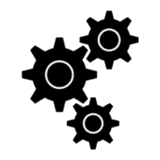
A system is an organized group of related objects or components; models can be used for understanding and predicting the behavior of systems.
Primary (K-2)
Elementary (3-5)
Middle (6-8)
High (9-12)
Systems and System Models are useful in science and engineering because the world is complex, so it is helpful to isolate a single system and construct a simplified model of it. “To do this, scientists and engineers imagine an artificial boundary between the system in question and everything else. They then examine the system in detail while treating the effects of things outside the boundary as either forces acting on the system or flows of matter and energy across it—for example, the gravitational force due to Earth on a book lying on a table or the carbon dioxide expelled by an organism. Consideration of flows into and out of the system is a crucial element of system design. In the laboratory or even in field research, the extent to which a system under study can be physically isolated or external conditions controlled is an important element of the design of an investigation and interpretation of results…The properties and behavior of the whole system can be very different from those of any of its parts, and large systems may have emergent properties, such as the shape of a tree, that cannot be predicted in detail from knowledge about the components and their interactions.” “Models can be valuable in predicting a system’s behaviors or in diagnosing problems or failures in its functioning, regardless of what type of system is being examined… In a simple mechanical system, interactions among the parts are describable in terms of forces among them that cause changes in motion or physical stresses. In more complex systems, it is not always possible or useful to consider interactions at this detailed mechanical level, yet it is equally important to ask what interactions are occurring (e.g., predator-prey relationships in an ecosystem) and to recognize that they all involve transfers of energy, matter, and (in some cases) information among parts of the system… Any model of a system incorporates assumptions and approximations; the key is to be aware of what they are and how they affect the model’s reliability and precision. Predictions may be reliable but not precise or, worse, precise but not reliable; the degree of reliability and precision needed depends on the use to which the model will be put.” | |
CCCs5:Energy and Matter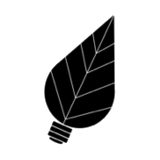
Tracking energy and matter flows, into, out of, and within systems helps one understand their system’s behavior.
Primary (K-2)
Elementary (3-5)
Middle (6-8)
High (9-12)
Energy and Matter are essential concepts in all disciplines of science and engineering, often in connection with systems. “The supply of energy and of each needed chemical element restricts a system’s operation—for example, without inputs of energy (sunlight) and matter (carbon dioxide and water), a plant cannot grow. Hence, it is very informative to track the transfers of matter and energy within, into, or out of any system under study. “In many systems there also are cycles of various types. In some cases, the most readily observable cycling may be of matter—for example, water going back and forth between Earth’s atmosphere and its surface and subsurface reservoirs. Any such cycle of matter also involves associated energy transfers at each stage, so to fully understand the water cycle, one must model not only how water moves between parts of the system but also the energy transfer mechanisms that are critical for that motion. “Consideration of energy and matter inputs, outputs, and flows or transfers within a system or process are equally important for engineering. A major goal in design is to maximize certain types of energy output while minimizing others, in order to minimize the energy inputs needed to achieve a desired task.” | |
CCCs6:Structure and Function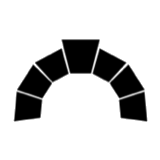
The way an object is shaped or structured determines many of its properties and functions.
Primary (K-2)
Elementary (3-5)
Middle (6-8)
High (9-12)
Structure and Function are complementary properties. “The shape and stability of structures of natural and designed objects are related to their function(s). The functioning of natural and built systems alike depends on the shapes and relationships of certain key parts as well as on the properties of the materials from which they are made. A sense of scale is necessary in order to know what properties and what aspects of shape or material are relevant at a particular magnitude or in investigating particular phenomena—that is, the selection of an appropriate scale depends on the question being asked. For example, the substructures of molecules are not particularly important in understanding the phenomenon of pressure, but they are relevant to understanding why the ratio between temperature and pressure at constant volume is different for different substances. “Similarly, understanding how a bicycle works is best addressed by examining the structures and their functions at the scale of, say, the frame, wheels, and pedals. However, building a lighter bicycle may require knowledge of the properties (such as rigidity and hardness) of the materials needed for specific parts of the bicycle. In that way, the builder can seek less dense materials with appropriate properties; this pursuit may lead in turn to an examination of the atomic-scale structure of candidate materials. As a result, new parts with the desired properties, possibly made of new materials, can be designed and fabricated.” | |
CCCs7:Stability and Change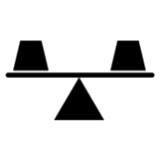
For both designed and natural systems, conditions that affect stability and factors that control rates of change are critical elements to consider and understand.
Primary (K-2)
Elementary (3-5)
Middle (6-8)
High (9-12)
Stability and Change are the primary concerns of many, if not most scientific and engineering endeavors. “Stability denotes a condition in which some aspects of a system are unchanging, at least at the scale of observation. Stability means that a small disturbance will fade away—that is, the system will stay in, or return to, the stable condition. Such stability can take different forms, with the simplest being a static equilibrium, such as a ladder leaning on a wall. By contrast, a system with steady inflows and outflows (i.e., constant conditions) is said to be in dynamic equilibrium. For example, a dam may be at a constant level with steady quantities of water coming in and out. . . . A repeating pattern of cyclic change—such as the moon orbiting Earth—can also be seen as a stable situation, even though it is clearly not static. “An understanding of dynamic equilibrium is crucial to understanding the major issues in any complex system—for example, population dynamics in an ecosystem or the relationship between the level of atmospheric carbon dioxide and Earth’s average temperature. Dynamic equilibrium is an equally important concept for understanding the physical forces in matter. Stable matter is a system of atoms in dynamic equilibrium. “In designing systems for stable operation, the mechanisms of external controls and internal ‘feedback’ loops are important design elements; feedback is important to understanding natural systems as well. A feedback loop is any mechanism in which a condition triggers some action that causes a change in that same condition, such as the temperature of a room triggering the thermostatic control that turns the room’s heater on or off. “A system can be stable on a small time scale, but on a larger time scale it may be seen to be changing. For example, when looking at a living organism over the course of an hour or a day, it may maintain stability; over longer periods, the organism grows, ages, and eventually dies. For the development of larger systems, such as the variety of living species inhabiting Earth or the formation of a galaxy, the relevant time scales may be very long indeed; such processes occur over millions or even billions of years.” | |
S |
|---|
SEPs1:Asking Questions and Defining Problems
| |
SEPs2:Developing and Using Models
| |
SEPs3:Planning and Carrying Out Investigations
| |
SEPs4:Analyzing and Interpreting Data
| |
SEPs5:Using Mathematics and Computational Thinking
| |
SEPs6:Constructing Explanations and Designing Solutions
| |
SEPs7:Engaging in Argument from Evidence
| |
SEPs8:Obtaining, Evaluating, and Communicating Information
| |


